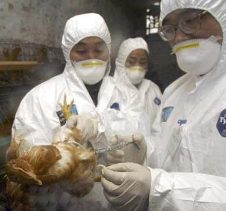Korean poultry industry strong despite HPAI outbreaks

Korea’s poultry industry has weathered a series of highly pathogenic avian influenza outbreaks over the last several months with no noticeable impact on the country’s broiler meat production, according to a Gain Report by the USDA’s Foreign Agricultural Service.
Poultry consumption has also increased due to a shortage of local pork, high red meat prices, and fears about radiation-contaminated seafood from Japan. As a result, this year’s import estimate was raised 22% to 110,000 tons. In response to high prices, the government has announced its intent to open a zero duty tariff-rate quota (TRQ) for chicken, but exact details have not yet been revealed.
HPAI outbreaks
H5N1 highly pathogenic avian influenza (HPAI) outbreaks began in wild birds located in the southern part of the country. The virus quickly spread, affecting commercial duck and chicken operations in 52 farms in 6 provinces. The last case was reported on April 18. Poultry on the affected farms has been culled and those premises within a 500 meter radius were also depopulated as a pre-emptive measure.
As of April 25, 2011, the number of culled poultry has reached a record of 6.4 million birds. Nonetheless, local broiler meat (chicken) production and consumption is expected to remain relatively unchanged from earlier estimates since the scope of the outbreak is relatively small in terms of total inventories. In addition, the affected broiler growers are expected to quickly re-populate their flocks. The largest HPAI outbreak before this latest string of cases was in spring 2008 when 3.45 millions of poultry were culled.
Poultry consumption
Korean consumers are not cutting back on chicken consumption because of the recent spate of HPAI cases in large part because they have already lived through past outbreaks and are well aware that proper handling and cooking eliminate the already low risk of contamination, the report stated.













